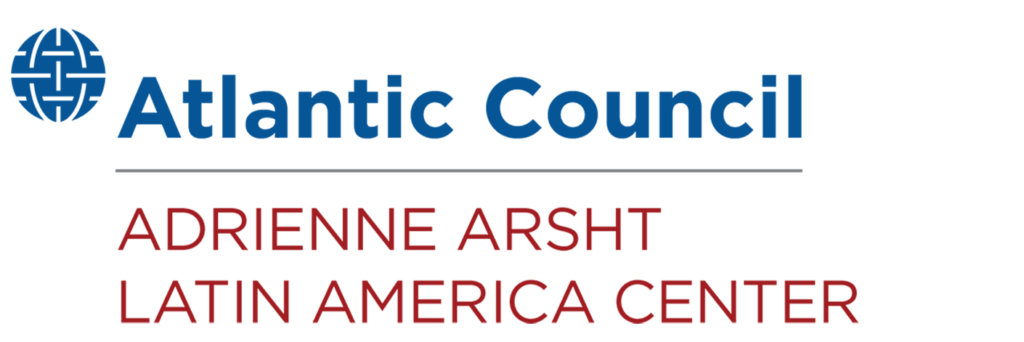Deepen conservation partnerships
COLOMBIA IS THE MOST IMPORTANT US ALLY in South America. Our relations include close and strategic cooperation on security, countering narcotics, human rights, and rule-of-law matters. But it is not always perceived how long and valuable our collaboration has been in con- serving nature, biodiversity, and sustainable natural resources, due mainly to active support by the US Agency for International Development (USAID), as well as non-governmental organizations (NGOs), including Audubon, Conservation International, the International Conservation Caucus Foundation (ICCF), Rainforest Alliance, Rainforest Trust, The Nature Conservancy, Wildlife Conservation Society, and World Wildlife Fund.
Colombia is the second most biodiverse country on Earth. More than 10 percent of all species on our planet are found in this one medium-sized nation. The diversity of birds is especially notable; there are at least 1,900 bird species (the most in the world), from a global total of 10,800. This abundance now attracts growing numbers of birders: The National Audubon Society has helped support the creation of hundreds of miles of bird-watching trails that have attracted considerable numbers of US tourists.
Fundamental to conservation in the country is the extensive natural parks and reserves network: fifty-nine sites totaling 65,000 square miles or 14 percent of the national territory. In the early days of the parks movement in the 1960s and 1970s, the US National Park Service provided vital train- ing and field help to Colombia, including preparing some of the first park management plans. The Peace Corps also assisted with long-term help. The parks included the gems of the system, Tayrona and Sierra Nevada de Santa Marta. The International Conservation Corps, an affiliate of ICCF, regularly provides teams of volunteer park experts from the United States and Canada to assist with the preparation of park and protected area management, the visitor center, and interpretation plans.
The parks network is still growing. Colombia recently expanded the park at Tatama with help from the private Rainforest Trust, and further expansions are under study at Sierra Nevada and Malpelo, among other sites. The Colombian government of President Iván Duque endorsed the global goal of “30 by 30” (30 percent of all land and water territory under some degree of protection by the year 2030).
Tourism, much of it nature-based, is playing an increasing role in economic development. Foreign visitors grew 300 percent from 2006 to 2019, including large numbers of US nationals. Tourism grew especially fast (8.5 percent per year) after the peace deal with the Revolutionary Armed Forces of Colombia was signed in 2016. This opened up many rural areas that had been closed due to insecurity. By the end of 2019, the tourism industry employed 1.4 million people and contributed $19 billion to the economy, equal to 3.8 percent of the gross domestic product.1Leonie Rauls, “How Tourism Can Jumpstart Colombia’s Economy,” AmericasQuarterly, June 2020, https://www.americasquarterly.org/article/how-tourism-can-jumpstart-colombias-economy/. Then came COVID-19 and a sharp decline in tourism, but Colombians are already rebounding by focusing on services, security, new infrastructure, and unique landscapes. As Colombians say with pride, Colombia is the only place on Earth where a visitor can sit on a tropical beach (at Santa Marta) and look up to see snow-capped mountains.
US-Colombia park partnerships
The most significant factor in US-Colombian cooperation for conservation has been through USAID programs. As part of its global mis- sion, USAID initially concentrated on issues of industrial growth, infrastructure, and housing. But since the early 1990s, nature conservation, especially in the sense of biodiversity, has been a priority. Colombia benefited from Parks in Peril (PiP), which for seventeen years after 1990, was the most extensive conservation program in Latin America. In partnership with the Nature Conservancy, it aimed to raise “paper parks” to a minimum level of long-term protection and active visitation by the public.
As elsewhere in the region, many parks in Colombia had been proclaimed by the government but not actually protected from inappropriate or illegal development by agricultural land invaders, loggers, illegal miners, and the drug trade. Parks in Peril worked in Colombia over several years to raise park sites to what was called “consolidation,” typically meaning that park boundaries had been marked, a visitor center had been built and staffed, park guards were trained and on duty, and local communities benefited from jobs and tourism income. La Playa, Chingaza, and Cahulnazi were among the parks that PiP helped.
Although PiP has ended, the conservation mission remains critical to USAID and Colombia. The largest such program has been USAID’s Natural Wealth, a multi-million-dollar 2017-2022 program. Working principally in the dry forests of the Caribbean region and the seasonally-flooded freshwater regions of the eastern plains, Natural Wealth has improved the management of parks while strengthening their governance by local communities and Indigenous tribes managing and legally defending their lands.
Colombia has massive potential for nature tourism in public parks and private reserves. Such projects can deliver jobs and prosperity while pre- serving landscapes (especially forests) vital to mitigating climate change. Moving forward, US government agencies, particularly USAID, should continue to find new ways to partner with Colombia on nature tourism projects. US development assistance, NGO support, and public-private partnerships to leverage Colombian investment are crucial to the success of these efforts. The ICCF’s work to strengthen political will for conservation will help facilitate these partnerships and raise awareness among Colombia’s political elite about emerging opportunities in nature tourism and other preservation efforts.
Conservation caucuses
The ability of USAID to support conservation via Natural Wealth and other efforts worldwide is made possible by the biodiversity line item passed each year by the US Congress within the State and Foreign Operations appropriation. This item grew from about $100 million annu ally in the early 1990s to more than $400 million, due mainly to the House and Senate members’ consistent support of the US Congressional International Conservation Caucus (ICC), founded in 2003.
The advantage of a congressional caucus is it allows any member interested in a topic an opportunity to become more engaged and informed, regardless of committee assignments. Of the dozens of caucuses in the US Congress, the ICC is the second biggest, with almost one-third of the total membership of the House and Senate. Its mission is “helping the United States lead public and private international partnerships that provide stewardship of natural resources for habitat and biodiversity protection, poverty reduction, economic development, and regional security.”2”About the ICCF Group,” ICCF website, accessed March 18, 2022, https://www. internationalconservation.org/about.
The larger caucuses typically have a 501(c)3 organization affiliated, which arranges events of interest to the members, such as expert briefings, panel discussions, and field visits. The ICCF plays that role for the ICC. Beginning in 2015 with Colombia, the ICCF Group has extended the caucus “model” to more than fifteen foreign countries throughout the global trop- ics. Members attend expert meetings in the capital city, visit parks, and are invited to international events. The ICCF itself does not have any set agenda for conservation: the issues engaged are those raised by the legislative members. In addition to Colombia, in Latin America, the ICCF Group has staff and active caucuses in Brazil, Mexico, Peru, and several islands of the Eastern Caribbean, with further expansion anticipated to Paraguay and Ecuador.
Of these international caucuses, Colombia’s remains the most active and successful. More than forty members belong to the core conservation caucus and a parallel caucus that concentrates on ocean issues. Membership has included the speaker of the lower house and vice president of the Senate. The Colombian conservation caucus has also encouraged regional activism by Colombian members of the Andean Parliament, Amazon Parliament, Leticia Pact, and observer status at gatherings such as the Biodiversity Convention Conference of the Parties. Chiefly through the interest and engagement of these caucus members, the Colombian Congress has adopted the following new conservation laws in recent years:
- Approval of 2013 Minamata Convention on Mercury. Led to Colombia’s formal accession to the Minamata Convention on Mercury.
- Law for the Protection of Andean Highlands (Páramos). Regulates activities in and around the Andean highlands for the restoration and sustainable use of these integral ecosystems.
- Police Code to Fight Use of Mercury in Illegal Gold Mining. Prohibits the use of chemical substances in the irregular removal of minerals.
- Plastic Bags Ban, Isle of San Andrés. Phases out single-use plastics in the Colombian archipelago.
- Kigali Amendment to the Montreal Protocol. Adds the fifth modification to the Montreal Protocol for the ozone layer.
- Approval of the Global Green Growth Initiative Project. The Global Institute for Green Growth is established in Colombia as an international organization.
By adding an element of “political will,” the caucus movement engages political elites with conservation issues, encouraging them to take owner- ship of them, potentially reducing dependence on outside assistance.
Colombia is increasingly taking responsibility for and making notable strides toward conserving its natural resources. Still, larger domestic appropriations for national parks and protected areas will be crucial to future progress. The creation of sizeable new protected areas, particularly in the forested zones, is a possibility and should be a priority—as recently demonstrated by Rainforest Trust’s commitment to subsidize the creation of a new national park. There is substantial potential for partnering with US-based NGOs and public-private partnerships for nature tourism infrastructure. In partnership with the US Government and with US-based nonprofits, foundations, and other private-sector actors, Colombia can preserve and lever- age its vast biodiversity and natural wealth for the benefit of the Colombian people and for our shared future.
Related Allies essays
A roadmap for a new type of engagement
This moment opens the door for a reimagined US partnership with Colombia based on a shared vision for a more prosperous, inclusive, and sustainable future.
Related program

The Adrienne Arsht Latin America Center broadens understanding of regional transformations and delivers constructive, results-oriented solutions to inform how the public and private sectors can advance hemispheric prosperity.
